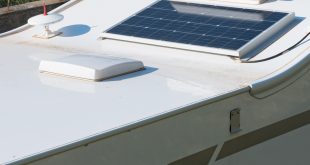What’s an o-ring?
An o-ring is one of the most commonly used mechanical gasket seals. They can be used in a myriad of situations and conditions. It’s this versatility and durability that makes them such a popular choice across so many markets and industries. They work well in both static and dynamic applications and can withstand both extreme cold and extreme heat.

An o-ring is, as the name would suggest, circular in shape and is often compared to a donut. It’s usually made of rubber, but also comes in plastic or metal. It’s inserted between two pieces of mating materials and compressed to create a tight seal that will prevent leakage of gases or liquids. Because it’s made of a soft material, it’s flexible enough to warp to fit in the gap between the mating materials.
Of course, o-rings can malfunction and get worn down over time. If you suspect an o-ring needs replacing, this guide will help you to determine if your o-ring is malfunctioning and what’s wrong with it. We’ll also recommend the best replacement of o-ring for your appliance.
Wrong size of o-ring?
If your o-ring seems to be leaking or appears to need replacing, the most common issue is that your o-ring is actually of the wrong size. If there’s even the slightest error in your o-ring’s diameter, it’s possible that the pressure balance will be wrong, and that small leaks will start to occur.
Some of the other common issues with o-rings
- Abrasion
Abrasion is essentially the effect of repetitive friction and occurs most commonly in dynamic applications of o-rings. If the o-ring isn’t lubricated in the right way, abrasion is likely to occur and slowly wear away at the surface of the o-ring, thus causing the o-ring to begin to break down. Have a look at your o-ring to see if there are any marks, changes, or breaks that appear to be from excessive friction.
- Setting of compression
An o-ring can set or ‘freeze’ in shape when a physical or chemical change occurs at an extremely high temperature. If your o-ring is subject to very high or very low temperatures, it’s possible that these temperatures have reduced its elasticity, and thus, its ability to expand and compress. If the o-ring appears to be warped in shape, flattened, and has lost its elasticity, this may be your problem. A good solution is to look into buying new o-rings that can withstand more extreme temperatures. HNBR, or Hydrogenated Nitrile O-Rings are often a good solution, because of their highly resistant design.
- Chemical Attack
It’s possible that the material of your o-ring has reacted to a chemical that it has come into contact with. Look for signs of blistering, cracking, or a change in color. If this seems to be the issue, you must research the type of material of your o-ring replacement.
- Chemical swell
If your o-ring appears to have grown in size, it’s likely that chemical materials have begun to seep into the o-ring. This can change the effectiveness of the o-ring and its ability to provide a complete seal. The most effective way to resolve this issue is to consider which chemicals your o-ring is exposed to, and then consider which type of o-ring materials are likely to resist these chemicals.
- Installation errors
Often, o-rings are damaged during their installation. Check for dents or cuts in the o-ring that appear to have resulted from something catching on it during installation.
- Extrusion
High pressures can cause a tiny gap in your o-ring to form. If the pressure of the o-ring itself isn’t as high as the pressure of the liquid or gas it’s meant to be containing, a small amount of this liquid or gas will force its way out. You’ll spot this by the appearance of peeling or chipping on the outside of your o-ring. The best solution is to find an o-ring made of a harder material to minimize high-pressure clearance gaps.
- Spiralling
If an o-ring has begun to spiral and twist due to repeated circular movements, it will warp in shape and be a less effective seal. This issue will be easy to spot. Look for the spiral pattern similar to a candy cane. Usually, selecting a harder material that’s more robust will help to mitigate this issue upon replacement.
- Outgassing
Outgassing occurs when gases from within the o-ring’s formulation itself start to be released under vacuum-like conditions. If your o-ring starts to decompose in this way, it will lose its shape and its functionality quickly. There may be no physical signs of this occurring, other than a slight shrinkage. Try getting an o-ring made of pure polymers to reduce the risk of this occurring again.
How to measure the size and why it’s important
If you suspect your o-ring is of the wrong size, you must look into doing a careful remeasurement and replacing it with an o-ring of the correct size.
O-rings are usually measured in millimeters. Experts recommend using special tools rather than your standard ruler to ensure that you obtain the most precise measurement possible. There are two measurements involved in sizing an o-ring. First is the internal or external diameter or the ID or OD for short. This is the longest distance between the inside or outside edges of the ring. Depending on where you purchase your replacement o-rings, you’ll need either one or the other of these measurements. If your o-ring is cut, measure the length and then divide this number by 3.142. This will give you its original diameter.
Secondly, you’ll need the measurement of the cross-section of the o-ring. This is the width of the loop band itself, so it will be a tiny measurement (hence the need for extremely exact and accurate measuring tools). Make sure to measure your o-ring on a flat surface.
O-rings come in standard sizes and metric sizes. American companies almost always use the standard size system, also referred to as AS568B. There are 369 different sizes available in this sizing system, so you can see how easy it would be to misjudge or make an error in your selection. You’ll easily find an o-ring size chart if you’re looking for the best size to match your measurements. Most companies will also specify the measurements of the o-rings you’re purchasing in both millimeters and inches.
Replacing your o-rings
Once you have your precise measurements and know which size of o-ring is best for your appliance, it’s crucial to think about the material and make of the o-ring you’ll purchase to replace your old one. While they are very tiny in size, the materials used will determine the durability of the o-ring and its suitability for your specific appliance. Certain materials will interact with the gases and liquids that the seal is blocking, and chemical reactions can occur that will start to affect the functionality and efficiency of the seal. It may eventually wear away to the point that the appliance no longer functions, so taking the time to select your o-ring material carefully is essential.
For most appliances, we’d recommend looking into AC HNBR O-Rings & Seals. Aclube.com has dozens of o-ring ten packs to choose from made in this way. They come in a variety of colors and sizes and can be shipped worldwide. These o-rings are made of a synthetic polymer made through a chemical process of saturating the double bonds in nitriles butadiene segments with hydrogen. This process minimizes the number of double bonds, which makes the material much more capable of withstanding extreme heat and various chemicals. Using this material instead of another elastomer material will reduce the risk of your o-rings breaking down and causing leaks again.
Conclusion
If there’s a leak coming from a fault in your o-ring, you must do the proper research before attempting to replace it. Knowing what caused the o-ring to malfunction and break down in the first place means that you can determine what type of o-ring is most suitable for your appliance. There’s no point in replacing something only for it to break again!
Using this guide, you hopefully have determined the issue that caused your o-ring to start leaking. You also have the tools to determine the correct measurements for your new o-ring. Remember, finding an o-ring that’s as close to perfect in size is crucial for creating a functional, leak-proof seal. Finally, you now have the information you need regarding the best type of material for your specific o-ring needs. The most important thing to remember is that the o-ring you purchase must be tailored to your specific purpose, or it won’t be bound to break again and again.
 World inside pictures Collect and share the best ideas that make our life easier
World inside pictures Collect and share the best ideas that make our life easier








